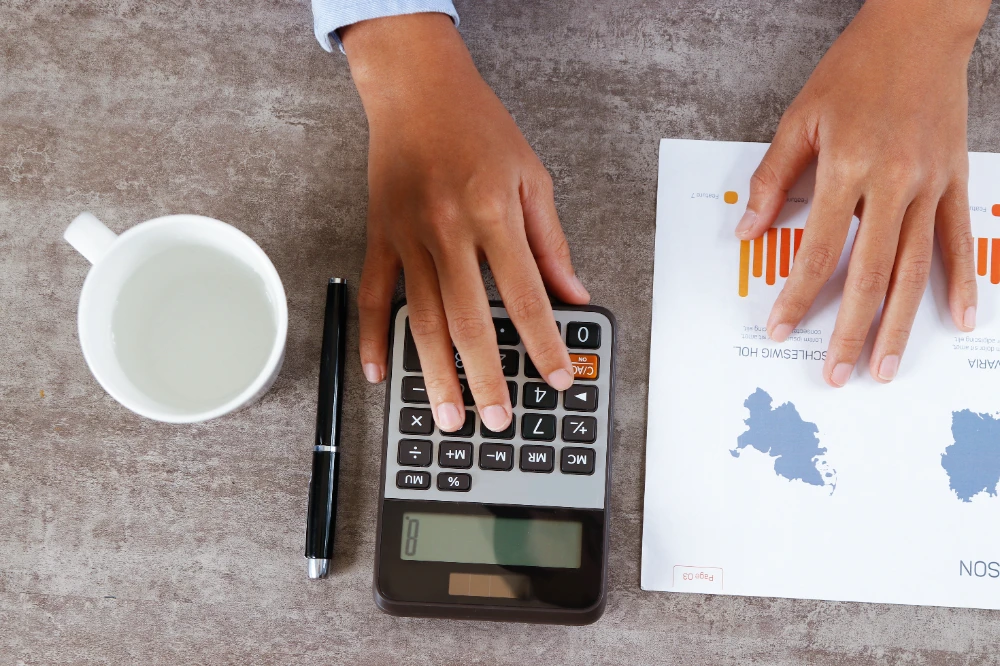If you have a large inventory, calculating its cost is a pain, but it’s essential to understand how much capital is invested in it for making informed financial decisions. However, listing down the cost of each item by hand is short of impossible.
That’s where the weighted average inventory method comes in. With this formula, you can figure out the value of the items in your inventory.
In this blog, you’ll discover how to measure the cost of your inventory using the weighted average cost method.
What Is the Weighted Average Cost Method?
The weighted average cost method is used to quantify the value of your inventory. To calculate it, you need to find the average cost of the total items in your inventory.
This method is popular because it is easy to calculate and you can use these values to better understand the overall cost of your inventory.
Since WAC (Weighted Average Cost) only needs general data on total purchase units and costs, you’ll have less paperwork to deal with than with other methods.
However, this method is not as accurate as the specific identification which tracks each item individually.
How to Calculate Weighted Average Cost
To find out the WAC value of your inventory, you’ll need:
- WAC Formula
- Cost of Goods Available for Sale Formula
- The Units in Inventory Formula
- The Records of Total Units Purchased
- The Cost of Your Units
First, here’s the main formula which lets you calculate WAC:
Weighted Average Cost = Cost of Goods Available for Sale / Total Number of Units in Inventory
As you can see in the formula, we’ll have to calculate the two factors. So, let’s look into the two other formulas before we come back to this one.
How to Calculate Cost of Goods Available for Sale
To begin working out WAC, we need to discover the cost of the items you have in your inventory that are ready for sale. To get this value, you need to add the total value of the goods at the beginning of the period to the price you paid when you bought new units.
Cost of Goods Available for Sale = Beginning Inventory Value + Cost of Goods Purchased
How to Calculate Units in Inventory
Once you have your cost of goods available for sale, you should calculate the number of units sold. While you could manually audit your inventory and count by hand, there’s a simpler way:
Total Units Available for Sale = Beginning Inventory + Purchased Inventory
And so, just by looking at the total numbers in your accounts, you can calculate the number of units you have in your inventory.
Now let’s put these three formulas in action!
An Example of WAC Calculation
To better understand the weighted average inventory method, let’s say you have a business where you sell scented soaps. You buy your soap package and resell it.
The prices of these soap bars can vary due to changes in your suppliers. In that case, WAC can help you harmonize your data into an easily understandable value.
- Cost of Goods Available for Sale:
Let’s say that you had 120 units, $600 worth of soap bars at the beginning of February. That’s your ‘beginning inventory’.
But during that month, you made three purchases:
- February 2: 150 units at $6 each
- February 11: 420 units at $9 each
- February 27: 210 units at $3 each
The cost of goods purchased is the total of the units times their price:
150 × $6 = $900
420 × $9 = $3,780
210 × $3 = $630
$900 + $3,780 + $630 = $5,310
And so, the cost of goods available for sale is:
Cost of Goods Available for Sale = Beginning Inventory Value + Cost of Goods Purchased
$600 + $5310 = $5,910
- Total Number of Units in Inventory
Next, you’ll need to calculate the total number of units you have in your inventory:
As we had 120 units at the beginning of February as beginning inventory, the total units in your inventory would be:
Total Units Available for Sale = Beginning Inventory + Purchased Inventory
120 + (150 + 420 + 210) = 900
- Weighted Average Cost
Now that you have all the figures required to calculate your WAC, let’s put them in the formula:
Weighted Average Cost = Cost of Goods Available for Sale / Total Number of Units in Inventory
$5,910 / 900 ≈ $6.567
So, this means that during February, the WAC of your soap bars was around $6.57.
Perpetual vs Periodic WAC
There are two ways to calculate WAC: The periodic and perpetual methods. The perpetual WAC requires you to calculate after each new purchase. And so the average value changes each time you do a calculation. Therefore, the perpetual method gives you constant up-to-date values. However, it requires you to dedicate more labor (or capital if you pay a service to do these calculations for you).
Using the values from the example above, you would apply the formula like so:
Beginning Inventory: $600 total; 120 units
February 2: 150 units at $6 each
And so, your WAC for February 2 is:
($600 + (150 × $6)) / (120 +150) ≈ $5.556
By the time you have calculated the average costs for the whole of February, you will reach the same value as in the first example.
On the other hand, you’ll use the periodic method less frequently so it takes less effort. You could do it yearly, quarterly, or monthly ― whatever time frame best suits your business.
And so, the main difference between these two methods is the time frame that is being examined and the effort required to do it.
When Should You Use the Weighted Average Inventory Method?
The weighted average inventory method is recognized by the International Financial Reporting Standards and the U.S.’s Generally Accepted Accounting Principles. Yet that doesn’t mean this formula suits all businesses. For instance, if you’re an artist that makes widely different pieces with prices to match this formula won’t work for you.
To know if you should use this formula the following should apply to your business:
- Your items are identical
- Assigning the cost of a single unit is difficult
- You have a regular, fast turnover
- You want to minimize paperwork
- You have a large volume of inventory
Conclusion
Knowing how to calculate weighted average accounting is straightforward. However, this method is more ideal if you have a large inventory with similar items. To calculate the weighted average cost, all you need to do is use this formula: WAC = Cost of Goods Available for Sale / Units of Inventory Available. This way, you can monitor this value ‘perpetually’ and get up-to-date information after each purchase.







